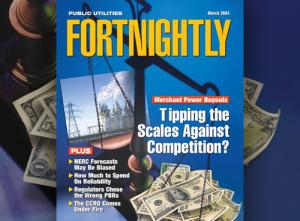A digital grid to the home, secured via a local fiber-optic network, could position utilities to fix power and telecom together.
Steve Rivkin is a Washington, D.C., telecommunications and energy lawyer who has long advocated close linkages between electricity and telecom networks in his advice to vendors, service providers, and federal government agencies. A prolific writer and speaker, Mr. Rivkin has written for Fortnightly for more than 20 years.
Before billions are spent building new transmission lines to ensure reliable electric service, North American electric utilities should evaluate whether the alternatives — controlling demand and fostering distributed generation — might be more cost-effective and broadly beneficial.

That’s what Bonneville Power Administration (BPA) suggested recently when it declared, “Before BPA decides to build a line, we want to make sure we have fully considered whether non-construction alternatives can be used. We want to look at all options, not just traditional construction.”1
Two substitutes in particular merit exploration:

